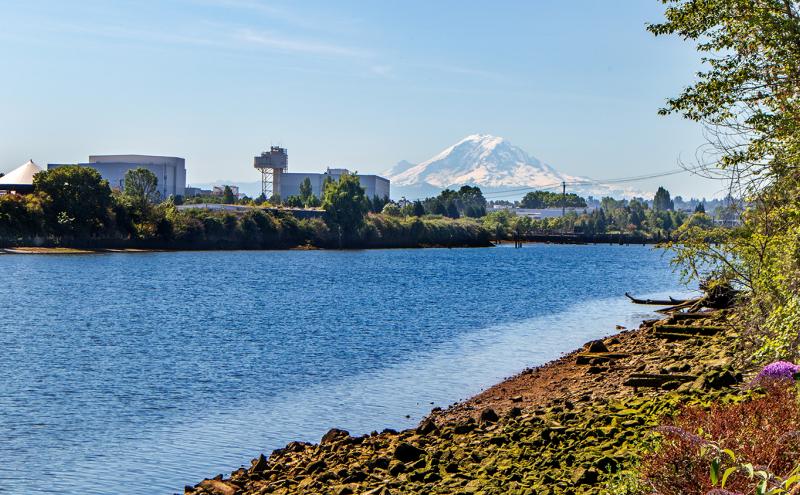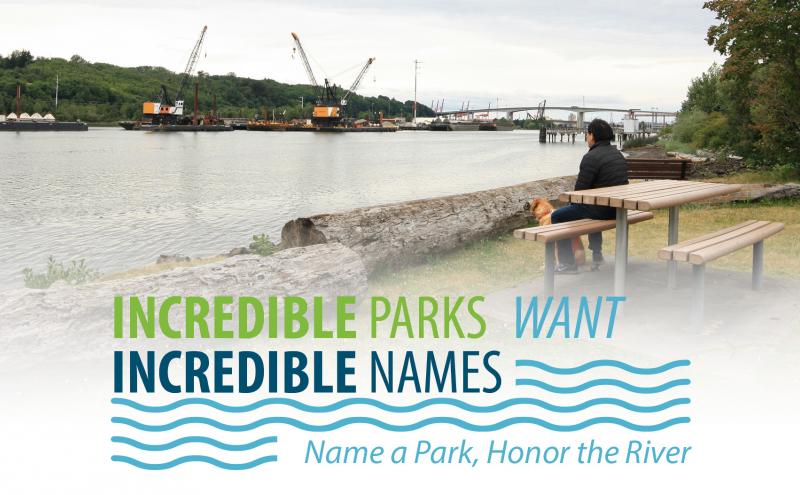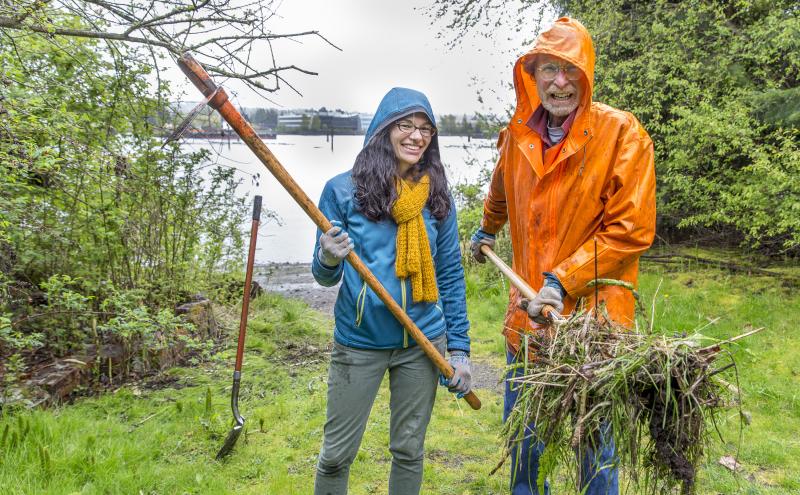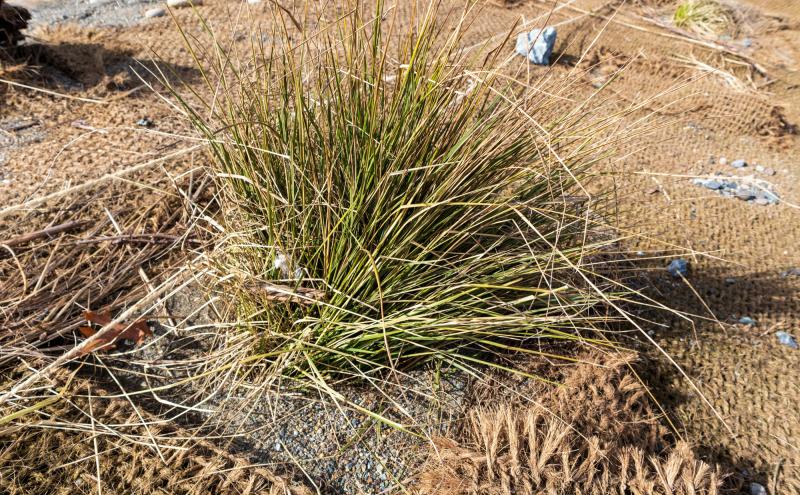
Spring is in the air and for many, this means getting the garden ready. At the Port we’re planting too. As we look toward warmer temperatures, we are digging in and testing out our green thumbs at Duwamish River People’s Park for the largest habitat restoration in a generation along the Duwamish River. This summer we will construct three planting zones. Soon each will be filled with native plants to create the perfect habitat for juvenile salmon as they begin their journey to sea. This will ultimately help feed Southern Resident orcas and other Puget Sound wildlife.
The restoration site is designed to promote growth of marsh plants, stabilize the critical high-tide level soil, and establish an important riparian buffer vegetation above the tideline.
Learn more about the planting zones we are developing to contribute to salmon recovery and the health of the Puget Sound wildlife.
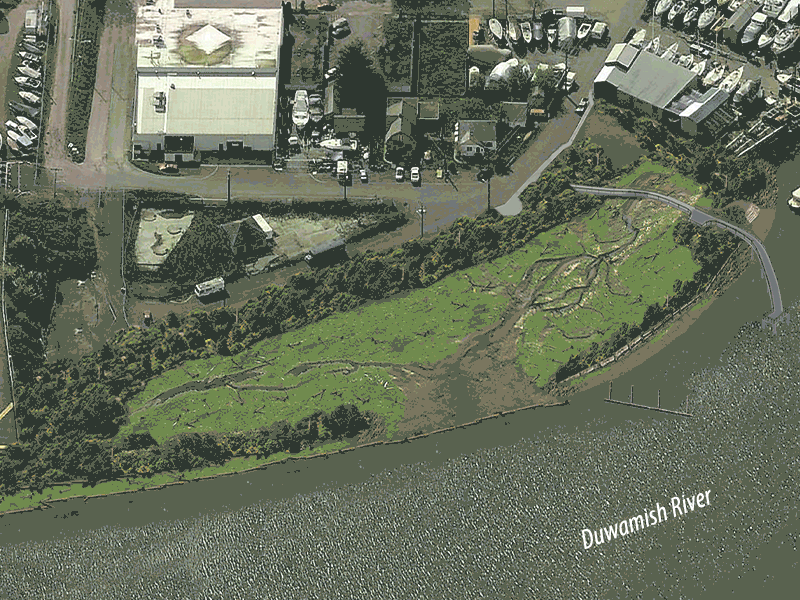
Inter-tidal marsh
An intertidal marsh is a shoreline that is exposed at low tide and submerged at high tide.
Marsh plants are adapted to daily inundation by mixed fresh and marine water. The plants expand by seed production and spreading below surface root systems. They grow rapidly during spring and early summer and begin to “senesce” or deteriorate in late summer, long before most upland vegetation.
Marsh vegetation absorbs carbon and nutrients from the water column. capturing large amounts of carbon in buried root masses, and may grow up to 40 inches high, providing an important food source for wildlife and refuge for habitat.
Following each growing season, slow deterioration of the above-surface portions of marsh plants provides food sources for small aquatic insects, which are later consumed by fish and birds. During winter months, marsh vegetation is reduced to a flat organic mat, with the dormant below surface carbon-rich root masses protected from temperature extremes by daily, day-time tidal flooding, ready to power late winter/early spring new growth.
Marsh vegetation:
- Baltic Rush (Juncus Balticus)
- Pacific Silverweed (Potentilla Pacifica)
- Puget Sound Beach Grass (Leymus Mollis)
- Lyngby’s Sedge (Carex Lyngbei)
Transitional shoreline vegetation
The transitional shoreline is just above the regular high-tide line and will be occasionally submerged by tidal or storm actions. Several species of specialized plants were planted as a continuous band across the restoration site, occupying an elevation above average low-tide
Tufted grass and beach grass will be installed as transitional vegetation, tolerant of irregular tidal inundation, while also able to flourish in slope or hillside areas above the reach of the tides Transitional plants provide a year-round above surface vegetation food source for birds and insects. The root masses of these plants, once established, have extraordinary strength, binding to the earth and resisting erosion.
Transitional shoreline vegetation:
Grasses:
- Saltgrass (Distichlis Spicata)
- Tufted Hair Grass (Deschampsia Cespitosa)
Riparian vegetation
This zone is above the transitional shoreline and is not submerged by regular tides.
Native trees and woody shrubs will be planted in slope areas above the average tide level, extending to the top-of-bank area. Trees, including deciduous maple, cottonwood, and willow, evergreen fir and spruce, and woody shrubs, featuring “swamp” roses, snowberry and currants, root together to stabilize slope areas and provide a protective habitat buffer.
These riparian plants provide important sources of energy-rich insect food sources for birds and, as wind-blown insects tumble into an adjacent aquatic area, abundant high calorie food for fish. As riparian vegetation grows, it provides shade and moderates water temperature, while absorbing air contaminants.
Riparian vegetation:
Shrubs and Perennials:
- Snowberry (Sumphoricarpos Albus)
- Nootka Rose (Rosa Nutkana)
- Red Osier Dogwood (Cornus Stolonifera)
- Beach Strawberry (Frageria Chiloesis)
- Cascara (Rhamnus Purshiana)
Trees:
- Red Alder (Alnus Rubra)
- Madrona (Arbutus Menziesii)
- Hooker/Sitka Willow (Salix Hookeriana/Stichensis)
- Western Red Cedar (Thuja Picata)
- Douglas Fir (Pseudosuga Menziesii)
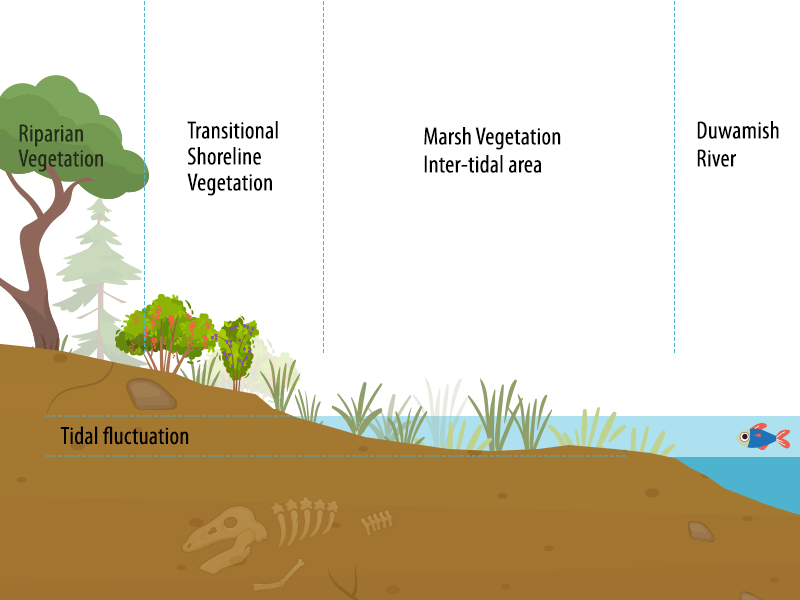
Young Port Explorers!
Hey kids (of all ages), what color do you think the plants at the People's Park should be?
Download and print out our planting coloring sheet and let us know by sharing your cool coloring sheet and tagging @portseattle on Facebook and @portofseattle on Twitter and Instagram.
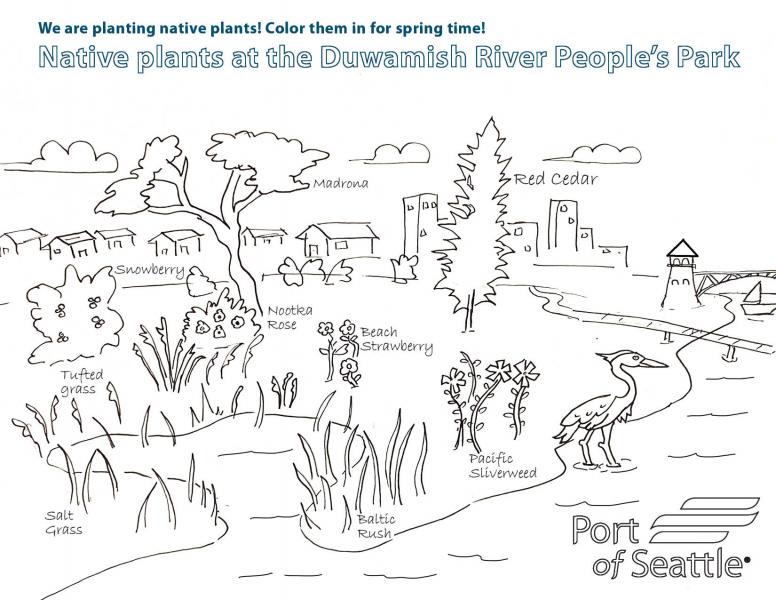
Interested in learning more?
- Organic Landscaping Tips to Try at Home
- Learn more about the Duwamish River People's Park Habitat Restoration

